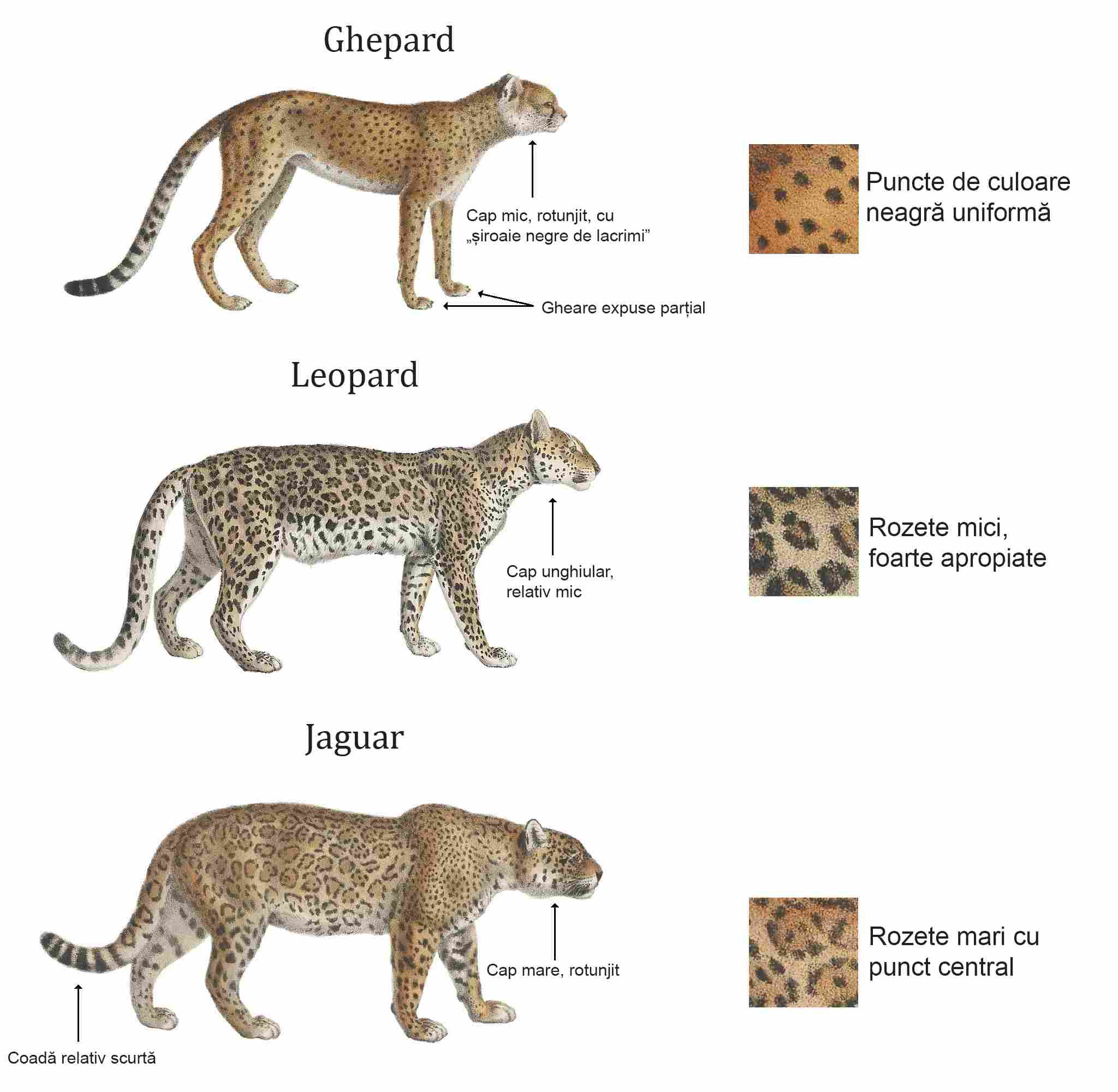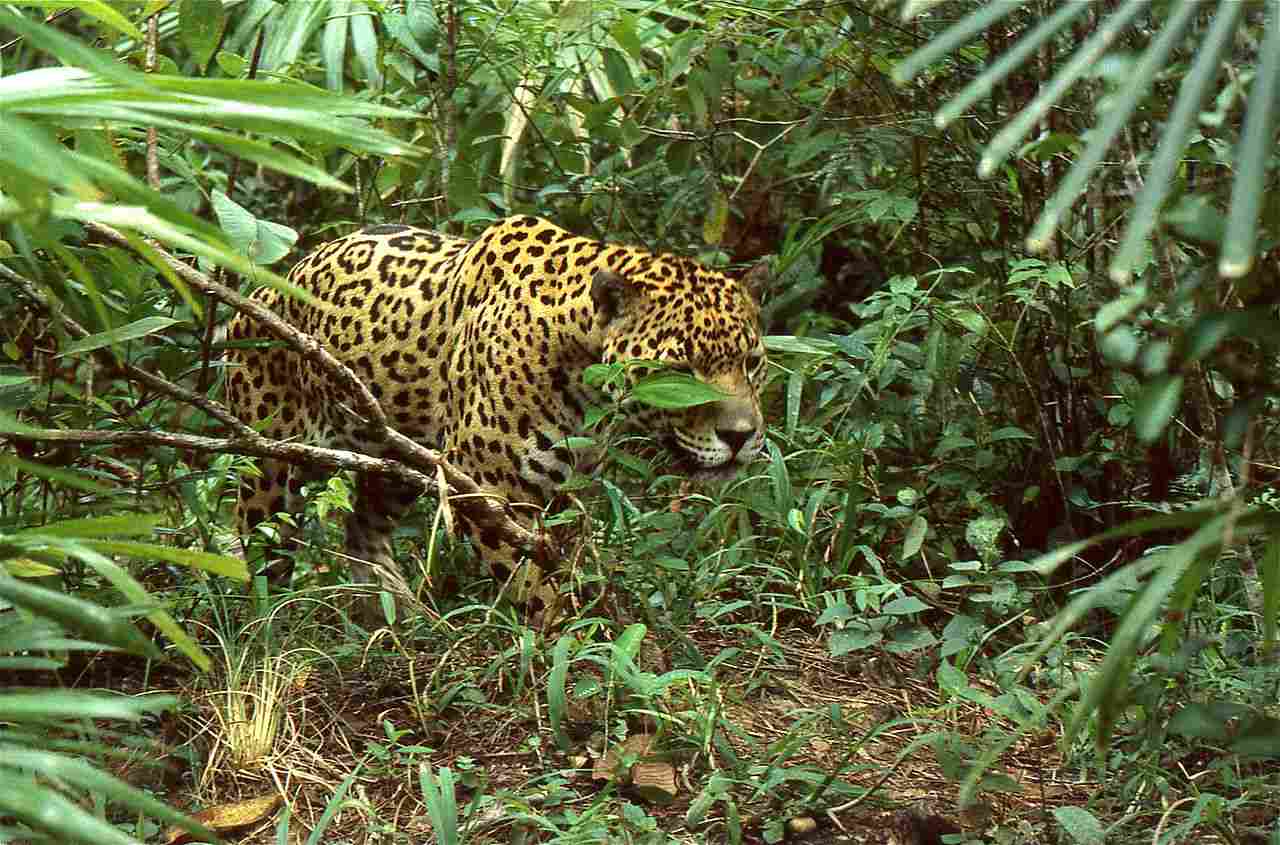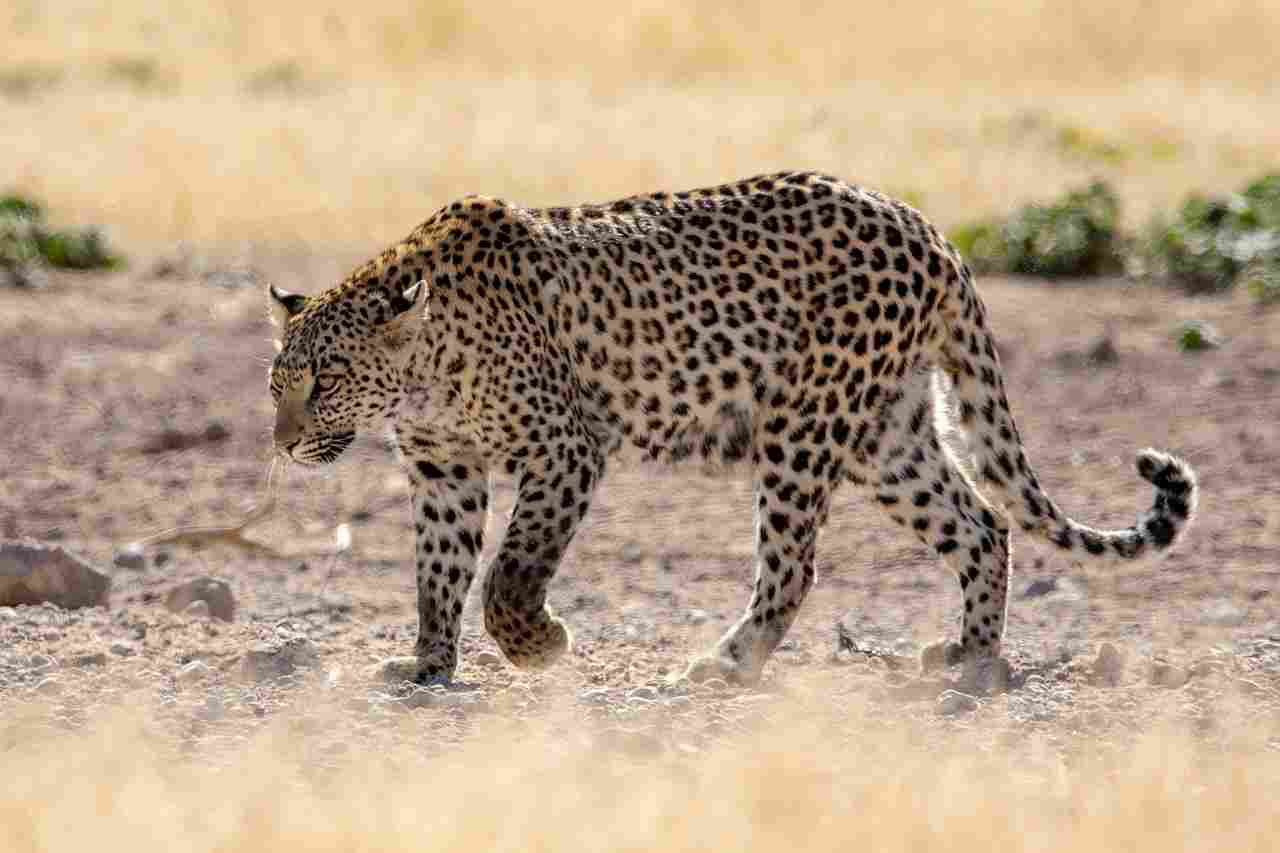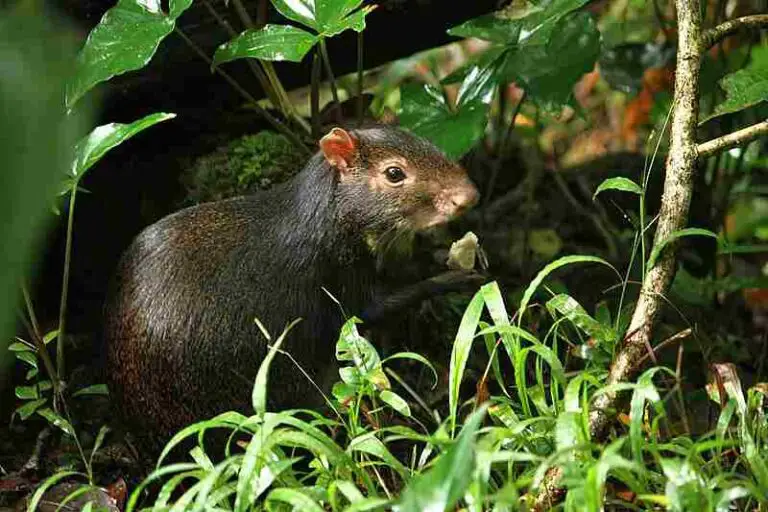Leopard Vs Jaguar Size, Weight, Ecology: Differences Between Leopard and Jaguar
A Jaguar will win a leopard in a fight because it is larger, heavier, stronger, has a powerful bite force, and is also fast. These factors, size and weight, give the jaguar a clear advantage over the leopard in a physical confrontation. The jaguar’s larger size and heavier weight make it more formidable and capable of overpowering the leopard. Additionally, the jaguar’s strength and powerful bite force further contribute to its dominance in a fight.
Its speed also plays a crucial role, allowing the jaguar to quickly outmaneuver and outpace the leopard.
Reasons Why a Jaguar Will Win a Leopard In a Fight/Physical Confrontation
I). Size and Weight Advantages
One of the main reasons why a jaguar will win a leopard in a fight or physical confrontation is due to its size and weight advantages. The jaguar is larger and heavier than the leopard, giving it a clear edge in terms of physical strength and power.
With a robust and muscular build, the jaguar is better equipped to overpower its opponent. Its larger size allows for more leverage and force, making it more formidable in combat. Additionally, the jaguar’s heavier weight provides it with greater stability and balance, enabling it to deliver stronger blows and withstand attacks from the leopard.

II). Strong Bite Force
Another factor that contributes to the jaguar’s advantage in a fight is its strong bite force. Jaguars have one of the most powerful bites among big cats, with a bite force that can crush bones and penetrate tough hides.
This formidable bite allows the jaguar to inflict severe injuries on its prey or opponent, incapacitating them quickly. In contrast, while leopards also have a strong bite, it is not as powerful as that of the jaguar. The jaguar’s superior bite force gives it a significant advantage in a physical confrontation.
III). Significant Speed
In addition to its size and bite force, the jaguar possesses significant speed, which further enhances its chances of winning a fight against a leopard. Jaguars are known for their agility and quickness, allowing them to swiftly maneuver and outpace their opponents.
This speed advantage enables the jaguar to launch surprise attacks, evade the leopard’s strikes, and gain the upper hand in a confrontation. The combination of size, bite force, and speed makes the jaguar a formidable predator and gives it the upper hand in a fight against a leopard.
*Details of Comparison
1). Taxonomy
The taxonomy of the leopard (Panthera pardus) and the jaguar (Panthera onca) places them in the same genus, Panthera, but different species. While they share similarities, there are distinct differences between these two big cats.
Leopards are known for their beautiful rosette patterns, which help them blend into their surroundings. They have a slender build and are agile climbers, often found resting on tree branches. On the other hand, jaguars have a stockier build, with a more muscular and powerful appearance. Their coat is typically a solid color, which aids in their camouflage within dense forests and jungles.
In terms of size, leopards are generally smaller than jaguars. Adult leopards typically measure between 4.5 to 6.25 feet in length, excluding the tail, and weigh between 66 to 176 pounds. Jaguars, on the other hand, are larger, with lengths ranging from 5.6 to 6.1 feet, excluding the tail, and weighing between 100 to 250 pounds.
2). Appearance
The appearance of both the leopard and the jaguar is a key factor in distinguishing between these two big cats. Their coat, fur, and skin play a significant role in their survival and adaptation to their respective habitats.
Leopards have a distinct coat pattern with rosette markings, which helps them blend into their surroundings. This camouflage allows them to stalk their prey without being easily detected. In contrast, jaguars have a solid-colored coat, which aids in their camouflage within dense forests and jungles. This allows them to remain hidden while waiting for the perfect moment to strike.
In terms of stature and build, leopards have a slender physique, making them agile climbers. They are often found resting on tree branches, using their strong limbs and sharp claws to navigate their arboreal habitats. On the other hand, jaguars have a stockier build, with a more muscular and powerful appearance. This physical strength enables them to take down larger prey and navigate through dense vegetation.

3). Size
When comparing the size of leopards and jaguars, there are a few key measurements to consider: total body length and height at the shoulders.
Leopards typically have a total body length ranging from 4.5 to 6.25 feet, with males being larger than females. At the shoulders, they stand at a height of around 2 to 2.6 feet. On the other hand, jaguars are slightly larger in size. They have a total body length ranging from 5.6 to 6.9 feet, with males being larger than females as well. At the shoulders, jaguars stand at a height of around 2.5 to 2.9 feet.
These size differences may not seem significant, but they can play a role in the hunting strategies and prey selection of these big cats. The larger size of jaguars gives them an advantage when it comes to taking down larger prey, such as deer and caimans. Leopards, with their slightly smaller size, are more agile climbers and are known to hunt from trees, preying on smaller animals like monkeys and antelope.
While both leopards and jaguars are impressive in size, jaguars tend to be slightly larger, which contributes to their ability to tackle larger prey.
4). Weight
Leopards typically weigh between 66 and 176 pounds, with males being larger and heavier than females. On the other hand, jaguars are known for their impressive size and strength, weighing between 100 and 250 pounds.
The weight disparity between leopards and jaguars can have an impact on their hunting abilities and prey selection. Jaguars, being larger and heavier, have the advantage of taking down larger prey, such as tapirs and capybaras. Their powerful build and muscular physique enable them to overpower and subdue their prey effectively.
Leopards, although smaller in size and weight, are no less formidable. Their agility and stealth make them skilled hunters, capable of ambushing and capturing prey with precision. They often target smaller animals like impalas and warthogs, utilizing their speed and agility to their advantage.
While both leopards and jaguars are skilled predators, the weight difference between the two contributes to their hunting strategies and the types of prey they can successfully tackle. Jaguars, with their larger size and weight, have the advantage when it comes to overpowering larger prey, while leopards rely on their agility and adaptability to thrive in their respective habitats.
5). Speed and Agility
Leopards and jaguars are both known for their impressive speed and agility, but there are some differences between the two.
When it comes to speed, jaguars have the advantage. They are considered one of the fastest big cats, capable of reaching speeds of up to 50 miles per hour (80 kilometers per hour). This speed allows them to chase down their prey with ease, making them formidable hunters.
Leopards, on the other hand, are slightly slower, reaching speeds of around 36 miles per hour (58 kilometers per hour). While not as fast as jaguars, leopards still possess impressive speed that aids them in their hunting endeavors.
In terms of agility, both leopards and jaguars are highly skilled. They are able to navigate through dense vegetation and climb trees with ease. However, leopards are often considered more agile than jaguars. Their slender build and flexible bodies allow them to move swiftly and gracefully, making them adept at hunting in various terrains. Jaguars, although not as agile as leopards, still possess a remarkable level of agility that enables them to navigate their habitats effectively.
Therefore, while jaguars may have the advantage in terms of speed, both leopards and jaguars possess impressive agility that contributes to their hunting success.
6). Bite Force
Jaguars have one of the strongest bites among big cats, with an estimated bite force of around 1,500 psi. This powerful bite allows them to pierce through the skulls and shells of their prey, making them formidable predators. On the other hand, leopards have a slightly lower bite force, estimated to be around 700 psi. While not as strong as jaguars, leopards still possess a significant bite force that enables them to effectively subdue their prey.
The difference in bite force between leopards and jaguars can be attributed to their differing hunting strategies and prey preferences. Jaguars often target larger prey, such as caimans and tapirs, which require a stronger bite force to immobilize. Leopards, on the other hand, tend to focus on smaller prey, such as impalas and gazelles, which do not require as much force to subdue.
While jaguars have a stronger bite force compared to leopards, both species possess sufficient bite force to successfully hunt and capture their respective prey.
7). Overall Physical Capacity (Which is Stronger?)
When comparing the overall physical capacity of a jaguar and a leopard, it becomes evident that the jaguar is stronger. This conclusion is based on several factors that we have evaluated and compared between the two big cats.
Firstly, the jaguar’s powerful bite force gives it a significant advantage over the leopard. With an estimated bite force of around 1,500 psi, the jaguar can easily pierce through the skulls and shells of its prey, making it a formidable predator. In contrast, the leopard has a slightly lower bite force, estimated to be around 700 psi. While still significant, it is not as strong as the jaguar’s bite.
Secondly, the jaguar’s larger size and weight contribute to its overall physical strength. Jaguars are generally larger and more robust than leopards, with males weighing up to 250 pounds compared to the leopard’s maximum weight of around 200 pounds. This size advantage allows the jaguar to overpower its prey more effectively.
Lastly, the jaguar’s speed and agility further enhance its physical capacity. Jaguars are known for their exceptional climbing and swimming abilities, which enable them to navigate various terrains and catch their prey with precision. While leopards are also agile, the jaguar’s superior athleticism gives it an edge in terms of overall physical capacity.
8). Habitat
Jaguars are primarily found in the Americas, ranging from the southern United States to northern Argentina. They inhabit a variety of habitats, including rainforests, swamps, grasslands, and even deserts. This wide distribution allows them to thrive in diverse environments and take advantage of different prey species.
Leopards, on the other hand, have a more extensive geographic range. They are found in various parts of Africa, as well as in parts of Asia, including India and China. Leopards are highly adaptable and can survive in a range of habitats, from dense forests to open savannahs. This adaptability has contributed to their success as a species.
When comparing the habitat preferences of jaguars and leopards, it is clear that they have different ecological niches. Jaguars are more closely associated with dense vegetation and water sources, while leopards are known for their ability to thrive in both forested and open landscapes.

9). Lifespan
When comparing the lifespan of jaguars and leopards, it is important to consider various factors that can influence their longevity. Jaguars have an average lifespan of around 12 to 15 years in the wild, although some individuals have been known to live up to 20 years. On the other hand, leopards have a slightly longer lifespan, with an average of 12 to 17 years in the wild.
Several factors contribute to the differences in lifespan between these two big cats. One factor is the availability of prey. Jaguars, being primarily found in the Americas, have access to a wide range of prey species, including large mammals like deer and peccaries. This abundance of food resources can contribute to their overall health and longevity.
Leopards, on the other hand, have a more varied diet and can adapt to different prey species depending on their habitat. This adaptability allows them to survive in a range of environments but may also expose them to competition and potential conflicts with other predators.
Another factor that can influence lifespan is the level of human disturbance. Both jaguars and leopards face threats from habitat loss, poaching, and conflicts with humans. However, leopards, with their wider geographic range, may be more exposed to these threats, which can impact their survival and lifespan.
10). Behavior
When comparing the behavior of jaguars and leopards, several key aspects come into play. One significant difference lies in their feeding habits. Jaguars are known for their preference for hunting in water, often targeting fish and caimans. This aquatic behavior sets them apart from leopards, which typically hunt on land and have a more diverse diet.
Aggression is another behavioral characteristic that distinguishes these big cats. Jaguars are known to be more aggressive and territorial, often defending their hunting grounds from intruders. Leopards, on the other hand, are generally more adaptable and can coexist with other predators, such as lions or hyenas, in the same area.
Vocalization is an essential aspect of communication for both species. Jaguars produce a range of vocalizations, including roars, growls, and snarls, which they use to mark their territory and communicate with other jaguars. Leopards, on the other hand, have a more varied vocal repertoire, including purrs, grunts, and snarls, which they use for various social interactions.
In terms of social behavior, jaguars are generally more solitary animals, with males and females coming together only for mating purposes. Leopards, on the other hand, can exhibit more social tendencies, with some individuals forming loose associations or sharing territories with other leopards.
When it comes to parenting, both jaguars and leopards are attentive mothers. They provide care and protection to their cubs until they are old enough to fend for themselves. However, leopards are known to be more independent, often leaving their cubs hidden in dense vegetation while they go out to hunt.
Therefore, while both jaguars and leopards share some behavioral similarities, such as their solitary nature and parental care, their feeding habits, aggression levels, vocalizations, and social tendencies set them apart.
11). Reproduction
Both jaguars and leopards are viviparous, meaning they give birth to live young. However, there are some variations in their reproductive processes.
In terms of gestation period, jaguars have a slightly longer gestation period compared to leopards. Female jaguars carry their cubs for approximately 90 to 110 days before giving birth, while female leopards have a gestation period of around 90 to 105 days.
The number of cubs born in each litter also differs between the two species. Jaguars typically give birth to two to four cubs, although larger litters of up to six cubs have been recorded. On the other hand, leopards usually have smaller litters, with two to three cubs being the average.
Another notable difference is the time interval between reproductive cycles. Jaguars have a longer interval between breeding seasons, usually ranging from one to two years. In contrast, leopards have a shorter interval, with females typically breeding every one to two years.
In general, while both jaguars and leopards share the viviparous mode of reproduction, there are variations in their gestation periods, litter sizes, and breeding intervals.
12). Danger Posed to Humans
Both jaguars and leopards have the potential to come close to human settlements. However, their behavior towards humans differs.
Jaguars are known to be more aggressive towards humans compared to leopards. They have been reported to attack humans when they feel threatened or when their natural prey is scarce. In fact, jaguars have been responsible for a higher rate of human deaths compared to leopards.
On the other hand, while leopards can also pose a danger to humans, they are generally more elusive and tend to avoid human contact. They are known to be stealthy and prefer to hunt at night, which reduces the chances of encountering humans.
If you happen to encounter a jaguar or leopard in the wild, it is important to take precautions to ensure your safety. Maintain a safe distance and avoid any sudden movements that may provoke the animal. It is advisable to make yourself appear larger by raising your arms and making loud noises to deter the animal from approaching.
Therefore, both jaguars and leopards have the potential to pose a danger to humans, but jaguars are generally considered to be more aggressive.
13). Intelligence
Both jaguars and leopards are highly intelligent predators. They possess remarkable cognitive abilities that enable them to survive and thrive in their respective habitats.
Jaguars are known for their exceptional problem-solving skills and adaptability. They have been observed using various hunting techniques, such as ambushing their prey from trees or swimming to catch fish. Their ability to strategize and adapt to different environments showcases their intelligence.
Leopards, on the other hand, are equally intelligent and resourceful. They are skilled climbers and have been observed dragging their kills up trees to protect them from scavengers. This behavior demonstrates their ability to plan ahead and make use of their surroundings.
In terms of which is more intelligent, it is difficult to determine as intelligence can be subjective and varies among individuals. However, both jaguars and leopards exhibit high levels of intelligence that allow them to navigate their complex ecosystems and successfully hunt their prey.
14). Tracks
When comparing the tracks of jaguars and leopards, there are some distinct differences that can help identify which animal left the mark.
Jaguar tracks typically show a larger size compared to leopard tracks. The size of the tracks can vary depending on the individual animal, but in general, jaguar tracks are larger and more robust. This is due to the jaguar’s overall larger size and weight compared to leopards.
Another key difference is the shape of the tracks. Jaguar tracks often have a rounder shape with a wider heel pad, while leopard tracks tend to be more elongated and have a narrower heel pad. This difference in shape can be attributed to the jaguar’s stockier build and the leopard’s more slender physique.
Additionally, the claw marks in the tracks can provide further clues. Jaguar tracks usually show more prominent claw marks, as jaguars often use their claws to catch and hold onto their prey. Leopard tracks, on the other hand, may have less visible claw marks due to their hunting technique, which involves suffocating their prey rather than relying heavily on their claws.
15). Conservation Status
When it comes to the conservation status of leopards and jaguars, both species face significant challenges in the wild. They are both classified as “endangered” or “threatened” due to various factors that threaten their survival.
For leopards, the main threats to their populations include habitat loss, fragmentation, and degradation. As human populations expand and encroach upon leopard habitats, their natural habitats are being destroyed or converted for agriculture, infrastructure development, and human settlements. This loss of habitat limits their available range and disrupts their natural behaviors, making it harder for them to find food and mates.
Jaguars, on the other hand, face similar threats but also have the added challenge of being hunted for their beautiful fur. Illegal hunting and poaching for the wildlife trade have significantly impacted jaguar populations, especially in certain regions where their pelts are highly valued.
Both species also face conflicts with humans, as they are often seen as a threat to livestock and are sometimes killed in retaliation. This human-wildlife conflict further exacerbates the challenges faced by leopards and jaguars in their struggle for survival.

Conclusion
While leopards and jaguars share some similarities, they also have distinct differences that set them apart.
I). SIMILARITIES
Both leopards and jaguars belong to the Panthera genus and are known for their powerful builds and stunning coat patterns. They are both skilled climbers and swimmers, adapting well to various habitats. Additionally, both species face significant threats to their survival, including habitat loss and human-wildlife conflicts.
II). DIFFERENCES
One key difference between leopards and jaguars lies in their physical characteristics. Jaguars are generally larger and more robust than leopards, with a stockier build and a more muscular appearance. They also have a distinctive coat pattern, featuring rosettes with spots inside, while leopards have solid rosettes.
Another notable difference is their habitat preference. Leopards are highly adaptable and can be found in a wide range of habitats, including forests, grasslands, and mountains. On the other hand, jaguars are primarily found in dense rainforests and swamps, preferring areas with abundant water sources.
In terms of behavior, leopards are known for their elusive nature and solitary lifestyle, while jaguars are more territorial and have been observed to defend their territories aggressively.




